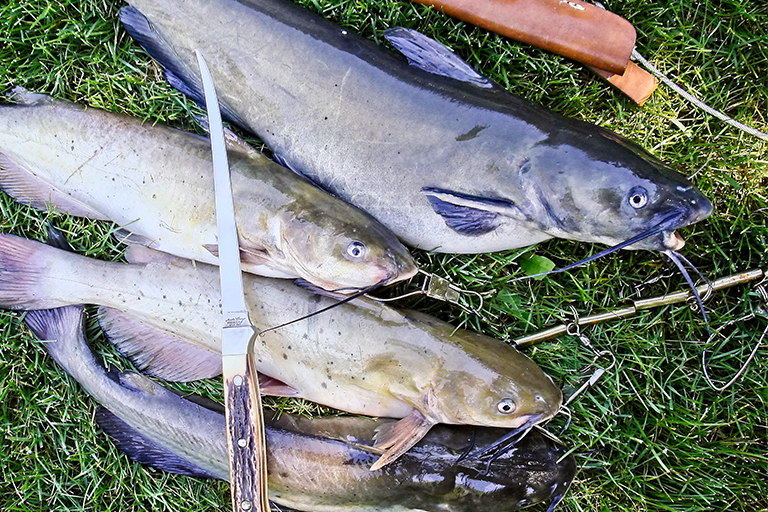By Dennis Smith
When I was a young’un, ‘bout 10 or 12 years old I reckon, we used to make a big fuss over fishing at night for bullhead catfish. We’d stay up late, sometimes into the wee hours of the morning, watching our poles, poking the fire, telling scary stories and listening to the music of the night — though, at that age we didn’t exactly think of owls, crickets and tree frogs as making music. In fact, their “music” kind of creeped us out in that strangely exciting way that only little kids can appreciate.
We’d get ready late in the day, gathering up fish poles, spare hooks and such, and then head to Sagar’s dairy farm to dig worms behind the cow barn where the soil was soft, black and nutrient-rich, infused with decades of bovine barnyard runoff. The worms loved it and we could fill a tin can or pickle jar with them in no time. Once dusk faded to dark we’d start the fire, pull up an old log or sit on the bare ground and wait for the action to begin. Most nights we’d end up with a stringer full of bullheads to take home for the skillet. They were ridiculously delicious.
Sixty-some years later, I still go cat fishing at night, albeit with my kids and grandkids instead of my older brother and cousins. We sit in folding camp chairs now instead of on the ground, and we light up the dark with Coleman lanterns instead of campfires, but everything else about it remains remarkably familiar.
Here in Colorado we catch channel catfish instead of bullheads, the difference between the two being more cosmetic and geographic than anything else. The two look very much alike, except bullheads are smaller and darker than channel cats, and have flat, rounded tails rather than the deeply-forked tail fins of their larger cousins.
Bullheads are found in most warm-water lakes, ponds and slow-moving rivers east of the Mississippi, while channel cats dominate similar waters in the West. Both are primarily nocturnal feeders; hence the success of night fishing. Both eat an endless variety of live baits ranging from common earthworms, crayfish, minnows, aquatic plants and insects to exotic and sometimes horrible-smelling man-made concoctions called stink baits. Most people just use night crawlers, but raw shrimp, chicken livers and cut baits are also good. A few years ago, some kids showed me pictures of 4-, 5- and 6-pound catfish they caught dragging slices of rolled-up Oscar Mayer lunch meat across the bottom of a local pond. Like cockroaches and coyotes, catfish will eat about anything.
While favorite baits and methods vary among catfish anglers, all seem to agree that fried catfish fillets dipped in egg and rolled in flour are ridiculously delicious. Also, the best time to catch them is after dark on a warm summer night, right about the time you begin to hear the tree frogs, crickets and coyotes tuning up for the evening concert.
Dennis Smith is a freelance outdoors writer and photographer whose work appears nationally. He lives in Loveland.

